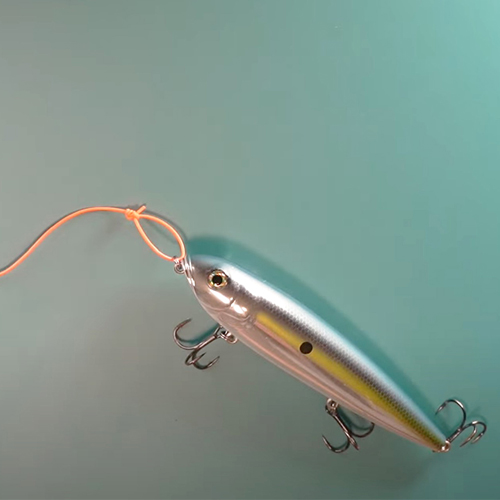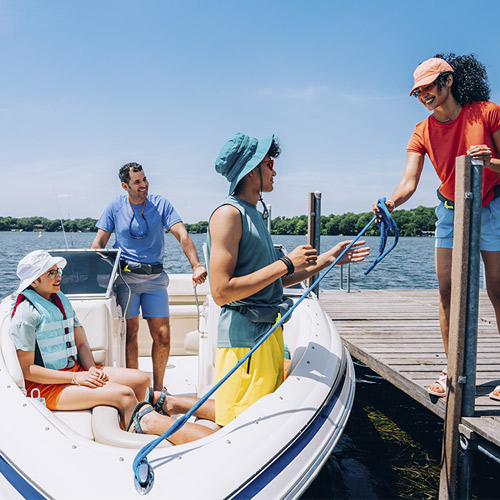How to Choose Fishing Tackle
Whether just learning how to fish or catching that first big game fish, there are a few things all anglers need to consider when choosing the best fishing tackle to use.
Best Fishing Tackle
Walking into a tackle shop or even the fishing department of your local outdoor or sporting goods store can be a bit of a daunting experience when learning how to fish. With literally dozens of types of bait and lures to choose from, you may think it impossible to learn how to choose fishing tackle. Meanwhile, your mind is buzzing with questions. What exactly is bass fishing tackle? What kind of bait do I need? Should I purchase fishing lures? Do I need to look at fishing tackle bags?
The first to know when choosing fishing tackle is considering the types of fish that will be available to catch at your fishing hole. If you are not fishing for bass, there is no need to purchase (or worry about) bass fishing tackle. Once you know the types of fish available, you can easily look up the types of bait they are attracted to. The following chart lists the most common types of fishing tackle and lures used in freshwater and saltwater fishing. Please check first with your state to get more information about fishing rules and regulations.
| Natural Bait | |||
| Type of Tackle | What to Know | Freshwater | Saltwater |
| Clams and Mussels |
Allow the fishing tackle to harden slightly before use so that it stays on the hook. |
X | X |
| Crayfish |
Dead crawfish can be used to bait catfish and carp. |
X | |
| Cut Fishing Bait |
Scaled, cut up fish can be used to bait fish attracted by scent. |
X | X |
| Dough Balls |
Can be made from scratch or purchased in prepared formulas. |
X | X |
| Grubs and Meal Worms |
Harvest from areas with dead vegetation or purchase from tackle shop. |
X | |
| Insects |
Including, but not limited to: ants, bee moths, beetles, caterpillars, crickets, grasshoppers, mayflies, stoneflies, and larvae. |
X | |
| Leeches |
Leeches have suckers at both ends. Hook the larger tail end for best results. |
X | |
| Live Bait |
Whole, live baitfish used to entice other larger prey, especially in deep sea venues. |
X | |
| Minnows |
Hook the minnow upside down on a jig to ensure continuous movement. |
X | |
In addition to the types of fishing lures listed above, there are also a variety of artificial versions of organic fishing bait to choose from. From worms and crayfish to grasshoppers and minnows, you can usually find plastic forms of organic bait at most fishing tackle shops. At the other end of that spectrum are technological advances like vibrating lures, which use motors controlled by microprocessors to create sound-producing vibrations to attract fish.
Here, however, is where you may need to reevaluate how you define “best” in determining the best fishing tackle for you. For instance, it may not necessarily be the best choice for beginners who have little experience tying knots and using lures to buy a set of expensive lures since losing lures while learning is practically a rite of passage for most beginner anglers.
Whether you want to go “old school” or embrace the latest technology, learning how to choose fishing tackle should always consider these three things: where you are fishing, what you are fishing for, and how experienced you are as an angler. Armed with this information, you should be able to easily find bait and other tackle for your fishing needs now that some of the mystery of the lingo has been revealed.
How To Get Started Fishing
These are some of the things you will need for a successful day on the water. You just need a few supplies to get started. Follow along as Take Me Fishing walks you through the essential gear you will need for a fishing adventure. You'll find everything you need at your local sporting goods store or fishing tackle shop. While you're in the store, make sure to ask about a fishing license.
Visit our next section to learn more about Tackle Boxes and Fishing Tools.
KEEP LEARNING

How to Tie the Non-Slip Loop Knot
The non-slip loop knot is a popular and reliable choice for securing hooks, lures, and other tackle to your fishing line.
LEARN MORE

Socials
Take me fishing social media links
LEARN MORE

TakeMeFishing x Teen Vogue
Join us on a creative journey as fashion designer Ahmrii Johnson walks us through her collaborative vision and process with Teen Vogue and fashion brand, Rentrayage, to create a special piece.
LEARN MORE


.png?lang=en-US&ext=.png)